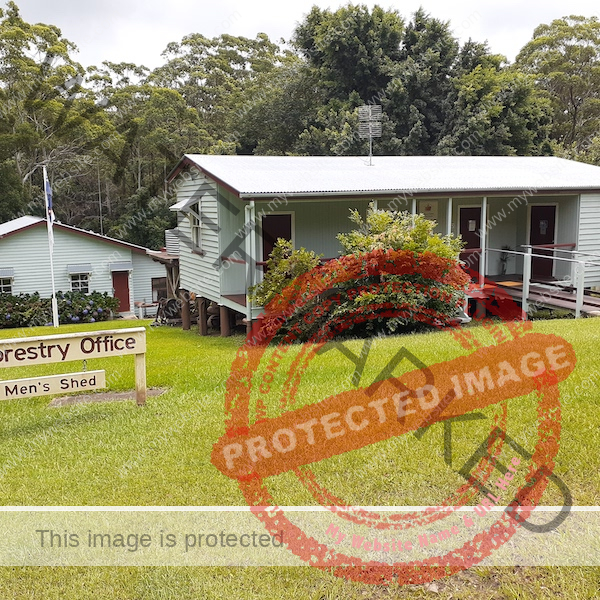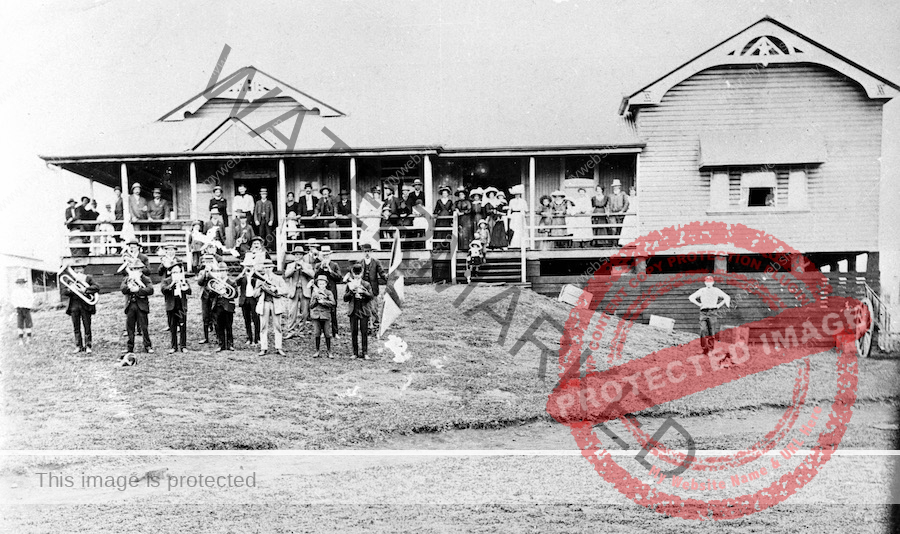History

Pre European Settlement
Prior to the arrival of Europeans, the Mapleton area was home to the Gubbi Gubbi people. This was Nalbo territory, and now, it is part of the Jinabara federation’s Native Title lands.
The Gubbi Gubbi people lived a semi-nomadic lifestyle, with hunting, fishing, and gathering forming the basis of their subsistence. They had a deep connection to the land, and their culture was closely tied to the natural environment. The Gubbi Gubbi people used a variety of tools and weapons, including spears, boomerangs, and digging sticks, which were made from local materials such as wood, stone, and bone.
The Mapleton area was also an important meeting place for Indigenous groups from across the region, who would gather to trade goods and hold ceremonies. The area was rich in resources, with abundant wildlife and a variety of plant species that were used for food, medicine, and other purposes.
With the arrival of Europeans in the 19th century, the Gubbi Gubbi people were displaced from their land and suffered greatly from the impacts of colonization. Today, efforts are being made to preserve and celebrate Indigenous culture in the Mapleton area, and to acknowledge the ongoing contributions of the traditional custodians of the land.
- The Gubbi Gubbi people have inhabited the Sunshine Coast region for thousands of years, with estimates of their presence dating back at least 20,000 years.
- The Mapleton area was an important meeting place for Indigenous groups, who would gather to trade goods and hold ceremonies. One example of this is the Bunya Festival, which was a significant cultural event held every three years by Indigenous groups across southeastern Queensland. The festival was centered around the harvest of the bunya nut, which was an important food source for many Indigenous groups in the region.
- The Gubbi Gubbi people had a deep connection to the land, and their culture was closely tied to the natural environment. They had a complex knowledge of the local flora and fauna, and used a variety of tools and weapons made from local materials. For example, they would use the fibrous bark of the kurrajong tree to make string and rope, and the leaves of the paperbark tree to wrap food.
- With the arrival of Europeans in the 19th century, the Gubbi Gubbi people were displaced from their land and suffered greatly from the impacts of colonization. European settlement led to the loss of traditional hunting and gathering areas, as well as the introduction of diseases that had devastating effects on Indigenous populations. In 1867, the Queensland government declared the Gubbi Gubbi people to be extinct, although this was not true and Indigenous people continued to live in the region.
- Today, efforts are being made to preserve and celebrate Indigenous culture in the Mapleton area. For example, the Kabi Kabi Cultural Centre in nearby Yandina offers tours and cultural experiences led by Indigenous guides, and the Sunshine Coast Council has established the Kabi Kabi First Nations Reference Group to help inform decision-making and promote cultural understanding.
In addition to the Gubbi Gubbi people, who were the traditional custodians of the land in the Blackall Range area, there were several other Indigenous groups who lived in the region. These included:
- The Dallambara: This was a group of Indigenous people who lived in the area around the Conondale Range, which is located to the west of the Blackall Range. The Dallambara were part of the wider Kabi Kabi group and shared a language and cultural similarities with the Gubbi Gubbi people.
- The Jinibara: This was another Indigenous group who lived in the region around the Blackall Range, particularly in the area around Mount Mee to the south of the range. The Jinibara were also part of the wider Kabi Kabi group and had their own distinct language and culture.
- The Wakka Wakka: This was an Indigenous group who lived to the north of the Blackall Range, in the area around Kingaroy and the upper reaches of the Brisbane River. The Wakka Wakka were part of the wider Wakka Wakka language group and had their own distinct culture and traditions.
It’s important to note that Indigenous groups often had complex relationships with each other, which could involve trade, marriage, alliances, and conflict. The boundaries between different groups were also fluid and could change over time, depending on a range of factors such as environmental conditions, population movements, and cultural practices.
Early Settlers
The first European settlers to arrive in the Mapleton area were primarily timber cutters and graziers, who were attracted to the region by the abundance of valuable timber and fertile soils. These early settlers lived a tough and isolated life, with little infrastructure and few services to support them.
In the 1880s, the construction of the Gympie to North Coast railway line brought increased activity to the region, and the first formal survey of the Mapleton area was undertaken in 1887. The survey laid out the boundaries of the Mapleton State Forest, which was established to protect the valuable timber resources of the region.
In the years that followed, a number of farmers began to establish homesteads in the Mapleton area, primarily for dairy farming and fruit growing. The farmers cleared the land of timber and began to cultivate the rich volcanic soils, with the first dairy farm established by William Pettigrew in 1893.
The establishment of the township of Nambour in 1890 marked a significant turning point in the development of the Mapleton area. Nambour quickly became a hub for the local economy, with a range of services and infrastructure to support the growing population. This included a railway station, which made it easier for farmers to transport their goods to market.
As Nambour grew, so too did the demand for land in the surrounding hinterland. Many of the early settlers in Mapleton arrived in the late 1890s and early 1900s, attracted by the promise of fertile land and a temperate climate. These settlers were primarily farmers, who established dairy farms and fruit orchards on the cleared land.

Mary Cairncross
Mary Cairncross was one of the earliest European settlers in the Mapleton area. She arrived in the area with her husband, William Cairncross, in 1878 and established a homestead on a property that would later become known as “Cairncross Corner”. The Cairncross homestead was located on the edge of the Mapleton State Forest, and the family had to contend with many challenges in establishing their farm in this remote and isolated location. They cleared the land of timber and began to cultivate the fertile soils, growing crops such as maize, pumpkins, and potatoes, as well as keeping cattle and pigs. Despite the challenges of life in the bush, the Cairncross family prospered and their farm became one of the most successful in the area. Mary Cairncross was known for her hard work and determination, and was highly regarded in the local community.
In the years that followed, more settlers arrived in the Mapleton area, and the town began to grow and develop. The establishment of Nambour in 1890 provided a boost to the local economy, and the railway line that was constructed in the early 1900s made it easier for farmers to transport their produce to market. As the population of Mapleton grew, so too did the demand for infrastructure and services. A number of guesthouses and boarding houses were established in the area to cater to tourists, who were attracted by the scenic beauty of the surrounding countryside and the cooler temperatures offered by the high elevation.
Today, the Cairncross homestead is a heritage-listed building and is part of the Mary Cairncross Scenic Reserve, which is named in honour of Mary Cairncross and her contribution to the development of the Mapleton area. The reserve is a popular destination for tourists and locals alike, with walking trails, picnic areas, and a visitor centre that celebrates the history and natural beauty of the region.

The 20th Century
In the early 1900s, the development of infrastructure continued to shape the growth of Mapleton.
The railway line, which was originally constructed in the late 1800s, was part of a wider network that connected the Sunshine Coast region to Brisbane and other major centres. The line was extended to Mapleton in 1915, which made it easier for farmers to transport their produce to market, and also opened up the area to tourists and other visitors.
The railway station at Mapleton was a hub of activity, with goods and passengers passing through on a regular basis. The station was an important link between Mapleton and other nearby towns and cities, and it played a vital role in the development of the region’s economy.
In the early days of the railway, steam trains were used to transport goods and passengers, and the railway line was an important employer in the region. The railway played a crucial role in the growth and development of Mapleton, providing improved access and opportunities for local residents.
Today, the railway line is no longer in operation, but the railway station building remains a heritage-listed structure, and it is an important part of Mapleton’s history and heritage. The building has been restored and renovated over the years, and it is now used as a community space, housing a range of local businesses and organisations. The railway continues to be an important part of Mapleton’s identity and history, and it remains a source of pride for many local residents.
Throughout the early 20th century, Mapleton continued to grow and develop as a hub for agriculture and tourism. The town became known for its dairy farming, with many of the local farmers supplying milk to the nearby Butter Factory in nearby Nambour. The growth of the tourism industry saw the establishment of a number of guesthouses and boarding houses, which catered to visitors who were attracted to the natural beauty of the area.
World War II
The 25th Battalion and 27th Battalion were both infantry units of the Australian Army that served during World War II. The 25th Battalion was originally formed in 1915 for service in World War I and was later re-formed for service in World War II. The 27th Battalion was also formed in 1915 and served in both World War I and World War II. During World War II, both battalions were stationed at various locations throughout Australia for training and deployment. The 25th Battalion was stationed at Azalea Street on the Blackall Range from around 1943 to 1944, while the 27th Battalion was also stationed on the Blackall Range in the about same period, but on the southern side of Ensbey Road, Flaxton.
The soldiers of the 25th Battalion underwent intense training at the Azalea Street camp, which included weapons and jungle training, drill, and physical conditioning. In early 1944, the battalion was deployed to New Guinea, where they saw active service against the Japanese in the Pacific theatre.
The 27th Battalion, meanwhile, also trained on the Blackall Range before being deployed to Papua New Guinea in late 1943, where they saw action in the battles of Finschhafen and Sattelberg and later in the operation to clear the Huon Peninsula. The battalion later fought in the Philippines campaign in 1945.
Both the 25th and 27th Battalions were heavily involved in the fighting against the Japanese in the Pacific theatre during World War II. They suffered significant casualties, and their service is commemorated in memorials throughout Australia. The camp’s locations are commemorated with signs at the entrance to both roads.
Post War Era
After the war, Mapleton continued to evolve and develop. The establishment of the Sunshine Coast as a tourism destination in the 1960s saw a further boom in the local tourism industry, with many visitors attracted to the region for its natural beauty, relaxed lifestyle, and excellent climate. The town also continued to develop as a hub for agriculture, with farmers diversifying into crops such as avocados and macadamias.
In more recent years, Mapleton has become known as a desirable location for both tourists and residents. The town has a strong community spirit, and a range of local events and festivals are held throughout the year, including the Mapleton Easter Carnival and the Mapleton Country Markets. The Mary Cairncross Scenic Reserve remains a popular destination for visitors, and the reserve has been expanded and improved over the years to ensure its ongoing preservation and protection.
Today, Mapleton is a thriving community that continues to celebrate its rich history and natural beauty. The town offers a range of services and facilities for residents and visitors alike, including shops, cafes, and accommodation options. It remains a popular destination for those seeking a relaxed and enjoyable lifestyle, and it is highly regarded for its strong sense of community and connection to the natural environment.

Mapleton Falls National Park
The park marks the point just west of Mapleton where Pencil Creek cascades 120 metres over an escarpment. This small, day-use-only park, shelters many bird species, including the peregrine falcon, eastern whipbird and wompoo fruit-dove. From the carpark, there is a short walk to Mapleton Falls lookout with wheelchair access to toilet and lookout. The panoramic view takes in the waterfall and Obi Obi Valley. From the open, grassy picnic area, the Wompoo circuit winds through eucalypts and rainforest where visitors may hear the fruit-dove’s booming calls, wallock-a-woo and book-a-roo. Near the causeway, frogs may be heard and distinctive hexagonal volcanic rocks seen.
A comprehensive description of the settlement and development of the Mapleton area is contained in the souvenir booklet Back to Mapleton Celebrations January 1967. Click below to download a free copy.
A contemporary resource outlining the history of the Mapleton National Park is contained in the self-published book by Burnard Collins (2021) Mapleton National Park – Secrets and Surprises. Contact Burnie by email to obtain a copy. Email: mapletonsecrets@gmail.com
Buildings to visit
Mapleton Tavern

Opened in 1910, this Australian pub has beautiful views over the hinterland and out to the Pacific Ocean. There is a pub restaurant where you can enjoy sitting out on the large verandah.
Mapleton Tavern is perched 400 metres above sea level on the edge of the Blackall Range and offers panoramic views of the green hinterland, out to the ocean of the Sunshine Coast, stretching from Noosa to Maroochydore.
Mapleton Men’s Shed

The Shed is located at 52 Delicia Road in the old Forestry Office buildings. The buildings were in a sorry state of disrepair when the Mapleton Men’s Shed was established. Through a series of grants, the members of the Shed have bought the facility back to life.
There are two buildings of significance (both are listed on the local government register of historical significance) – the Barracks and Workshop buildings. More information on the establishment of the Mapleton Men’s Shed can be found on their website.
The Old School House

The Old School House is situated at 17 Obi Obi Rd, and is now used as an Op Shop. Click the heading for a brief overview of the building’s life.
Other Interests
When visiting the village, you might like to explore the collections of local historical information at the following sites.

Sunshine Coast Libraries.
Mapleton Community Library
The Mapleton Library has in its collection Top of the Range – 1899-1999 Mapleton State School Centenary which provides an overview of the development of the village.
Open Monday – Friday from 14:00 to 17:00
Saturday 9:00 to 12.00.
Phone: 07 5445 7011
The Heritage Library
The main Heritage collection is at the Nambour library. Smaller collections, relevant to specific areas, can be accessed at Beerwah, Caloundra, Coolum, Kawana, Kenilworth, Maleny and Maroochydore libraries. It displays a collection of tools and equipment used in the forestry industry.
Open Monday – Friday from 9:00 to 12:00
Phone: 07 5294 6541
The Nambour Museum
The museum has an interesting display of Nambour artefacts and ephemera relating to the district. The museum has on display the old Shay engine that hauled timber, passengers and freight up and down the Range between Nambour and Mapleton.
Phone: 07 5441 2119
The information provided about the early settlement of Mapleton is drawn from a variety of historical records, including government reports, newspapers, and books about the history of the Sunshine Coast region and Queensland more broadly. Some of the specific sources that may have contributed to this information include the book “From Mud to Macadam: A History of the Shire of Landsborough” by Arthur D. Bonython, and various historical records held by the State Library of Queensland and the Queensland State Archives.
Banner image: Mapleton township, State Library of Queensland.